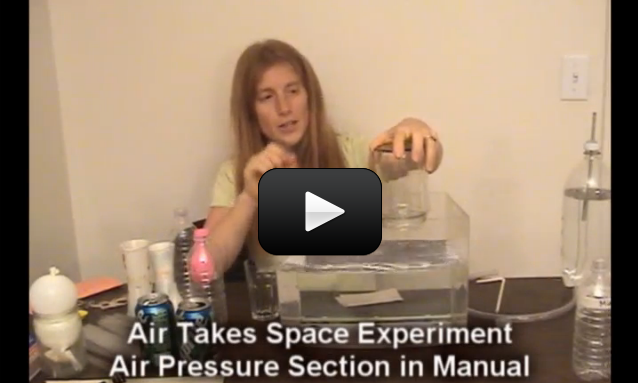You’re about to play with one of the first methods of underwater breathing developed for scuba divers hundreds of years ago.! Back then, scientists would invert a very large clear, bell-shaped jar over a diver standing on a platform, then lower the whole thing into the water. Everyone thought this was a great idea, until the diver ran out of breathable air…
Materials: 12″ flexible tubing, two clear plastic cups, bathtub
Please login or register to read the rest of this content.


You’re right – that’s actually how the first underwater vehicles were made – they were giant inverted bell-shaped domes equipped with window that sat on a platform which was lowered into the water. You only got so much time on one of those, however, so it also limited how far down you could go. You should check out “Exploring the Deep Dark Sea” by Gail Gibbons – it’s a favorite in our home!
Hi Aurora,
My son used this experiment to “breathe underwater” by sucking air back out of the jar, then blowing it gently back in. We discussed why this wouldn’t work for very long!
By the way, I love the videos that go with the experiments. We didn’t have flexible tubing, but as he watched what it was used for, he decided that two flexible-end straws would do the job. It’s great to find these opportunities for problem solving and critical thinking in Science.
Hi Aurora,
I really like this format with the materials list right at the top. It makes it very easy for me (Mom) to look through the shopping list, figure out which items I don’t have then scan through the experiments and figure out which experiment the missing items belongs to. Then I can watch the video or read the description and decide if I want to get the missing item or if I have something else that would do the job. I don’t have to hunt through all the experiments. I hope you’ll start formatting all the experiments in this way. It’s great!
PS. My daughter is having a blast with the experiments. I’m delighted. I love how you encourage the kids to try out and test different ideas. In the past, she would get really frustrated when an experiment didn’t’ work perfectly on the first try. Now she is telling me about the different ways she tries activities and which works better or worse. She’s learning and growing. Thanks.
Dawnette